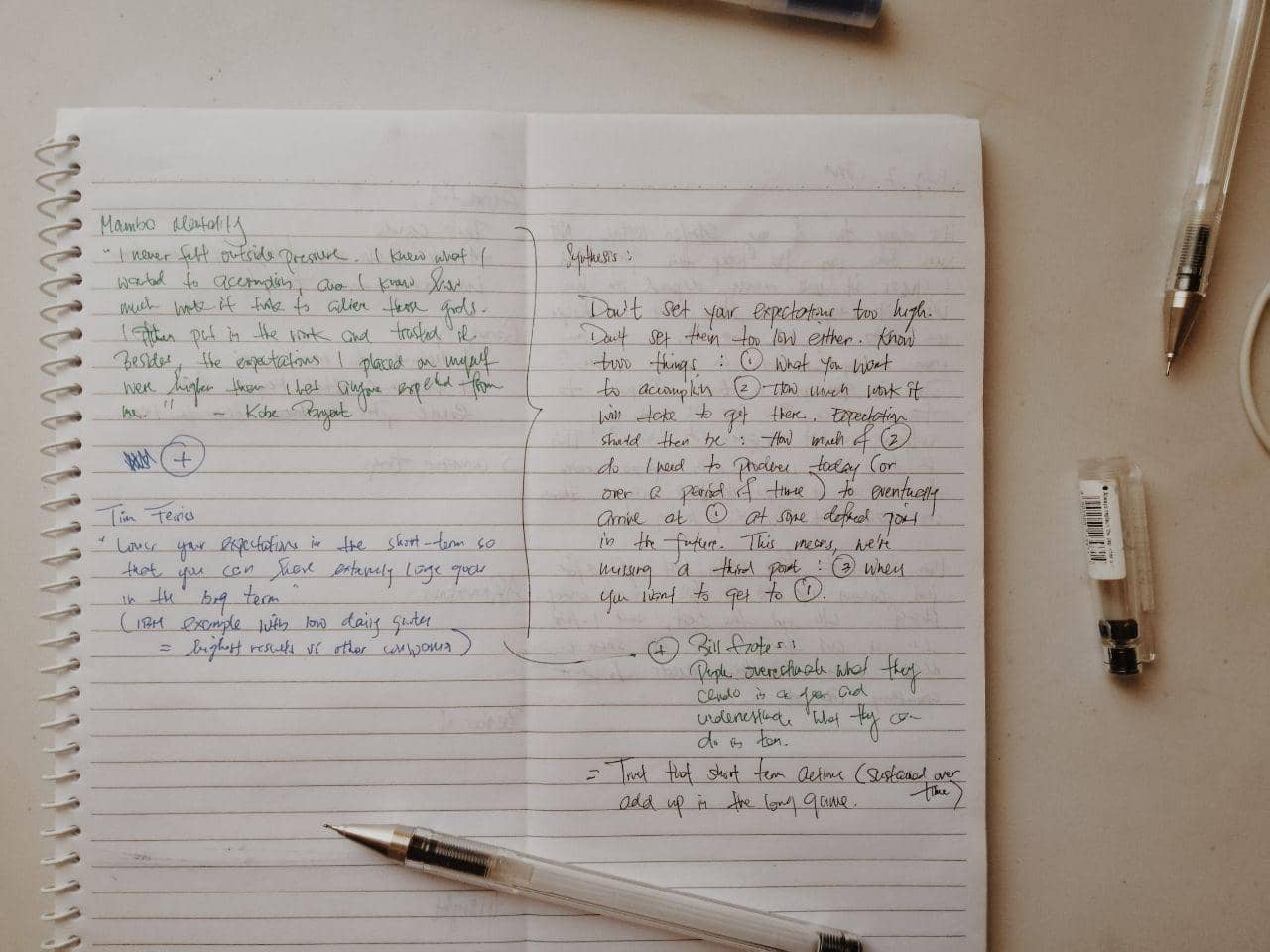Yesterday, I started the day really early to try out some new morning routines, which included half an hour of journaling.
As I was unloading some junk on the page, I was led to some reflections on setting expectations for myself, inspired by some quotes I’ve noted down recently.
I ended up with three varying quotes and a little synthesis just to bring them all together.
Below is a refined version of that page.
Reflection 1:
Tim Ferriss tells the story of some advice given to him by a ghostwriter on setting low expectations (I’m paraphrasing some bits):
GW: “Did you know that IBM, when it was the 800-pound gorilla, was an un-defeatable sales force. Do you know what one of their rules was?”
TF: “No.”
GW: “Well, what do you think their quotas were?
TF: “I’m sure their quotas were really high, ’cause they wanted to motivate their guys to get after it.”
GW: “No, their quotas were the lowest in the industry. And the rationale was: ‘we don’t want our sales people to be intimidated to pick up the phone. We want them to feel like they’re gonna pass their quota quickly,’ which they did and they shot well past it and clobbered the competition.”
Reflection 2:
This is a quote from Kobe Bryant taken from his book Mamba Mentality:
“I never felt the outside pressure. I knew what I wanted to accomplish, and I know how much work it took to achieve those goals. I then put in the work and trusted it. Besides, the expectations I placed on myself were higher than what anyone expected from me.”
Reflection 3:
This next quote, no one really knows who said it first, but I’ve heard it many times from various people. Many sources attribute it to Bill Gates, so I’ll stick with him, because he’s Bill Gates:
“People overestimate what can be done in one year, and underestimate what can be done in ten.”
Synthesis:
The question now is, how do we set expectations for ourselves? Go high like Kobe? Go low like Tim? Where do we begin?
Making sense of the three reflections above, there is a sweet spot for where you place your expectations, not too high and not too low. But to get there, you first need to know a few things:
1. Goal (G) = What you want to accomplish
2. Work (W) = How much work it will take to get to G
3. Time (T) = How soon you want to get to G
4. Initial Expectation (Ei) = W/T
Once you arrive at Ei, you then have to ask the question, “does this intimidate me or excite me to work?” Knowing the answer to this may take a few days or weeks of trial and error. Lower Ei accordingly until you get to a point where it is high enough to still be practical, but low enough that it does not paralyze you. Following that, you arrive at:
5. Effective Expectation (Ee) = Lowered Ei
Ee is the sweet spot. Once it’s set, it’s all a matter of sticking to it and trusting the compound interest that comes with sustained W over T.

